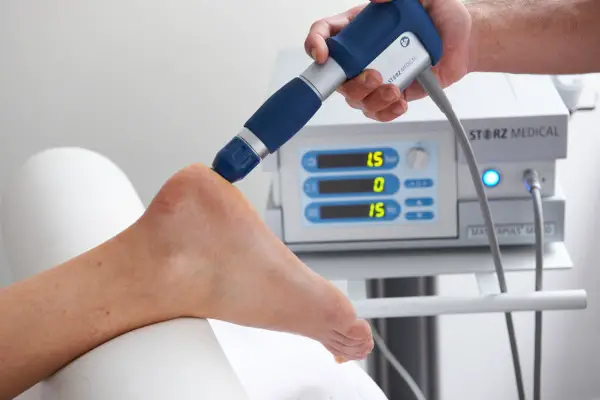What is a Shockwave therapy?
The shockwave therapy is a first-line, nonpinvasive and effective method of clinic practice used for the treatment and management of musculoskeletal and urolgic conditions. With the development in science and technology, the very method is also used for the treatment procedure of hip arthroplasty revisions, bone-cement interface, enhance osteogenic response and improve fracture healing. Though th complete nd detailed effects of shockwave therapy are unknown, treatments and further studies have shown that it promotes neovascularization at the tendon-bone junction, stimulate proliferation of tenocytes, increase leukocyte infiltration and amplify growth factor and protein synthesis to stimulate collagen synthesis and tissue remodelling.
Mechanism of shockwave therapy treatment
Shockwave is an acoustic wave which carries high energy to painful spots nd myoskeletal tissues and chronic conditions. This very energy promotes regeneration and reparative processes of the bones, tendons and other soft tissue particles. The whole mechanism of shockwave therapy can be classified into three major steps:
- Location of the area of treatment
First and foremost, the area to be treated i identified and located using palpation. This helps to deliver the therapy precisely in the right spot.
- Gel application
Adequate amount of gel is applied to the spot located. Usage of this gel helps in transfer of the acoustic waves a effective and smooth process.
- Therapy initiation
Finally, the shockwave applicator is pushed and massaged into the precise area to be treated and the start button is pushed enabling a complete treatment to the required area.
When should you approach for a shockwave treatment?
The shockwave therapy is beneficial in the treatment of the following conditions:
- Upper and lower extremity tendinopathies
- Greater trochanteric pain syndrome
- Medial tibial stress syndrome
- Patellar tendinopathy
- Plantar fasciopathy
- Adhesive capsulitis
- Non-union of long bone fracture
- Osteoarthritis of the knee
Along with the above musculoskeletal conditions, it is effective in the treatment of a few other conditions related to physiotherapy such as during pregnancy, over major blood vessels and nerves, open wounds, joint replacements, epiphysis, blood clotting disorders, infection, cancerous tissues etc.
Side effects of shockwave therapy
Durng the procedure of shockwave treatment it is common to feel a mild pain, which is an indication of th wounded area is responding to the treatment. Other symptoms found due to shockwave therapy treatment are:
- Redness
- Soreness
- Numbness
- Swelling
- Bruising
- Damage to soft tissue
- Rupture to the treated ligament
Shockwave therapy treatment Recovery period and Things to avoid
The usual recovery period of a shockwave therapy treatment is a week, within that span of time, you can notice significant changes due to treatment. However, any treatment, to experience its result to the fullest, it is mandatory to strictly adhere toits recovery tips and procedure. Some of the things to avoid yourself after a shockwave therapy treatment are:
- Avoid exercises that includes high energy consumptions such as running or other sports activities.
- Avoid the consumption of a non-steroidal anti-inflammatroy painkiller as it will counteract the treatment and render it useless
- Do not use ice in the area of pain for healing.
Shockwave therapy vs Radial wave therapy
The radial waves therapy is a divergent wave with lower maximum intensity and deliver their maximum intensity o a superficial area. It is usually 3-4 cm. They are effective in providing relief over a wider area and can treat low-depth issues and requires mmore focused treatments. While shockwave therapy allows adjustable and alterations in the penetration depending on where it needs to be treated. It is best suitable for treating deeper problems in areas such as pelvic or hip.They also have higher intensity and the range between 2-30 cm with an adjustable depth of focal area.
Conclusion
Shockwave therapy being a non-surgical therapy with no need for painkillers, it intervens and stimulates body’s natural healing process. Approaching for the right physical therapy from the very onset of any disease symptom can truly help you eradicate the disease from its root cause.







